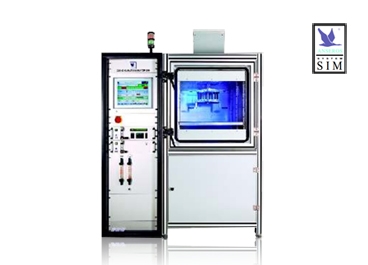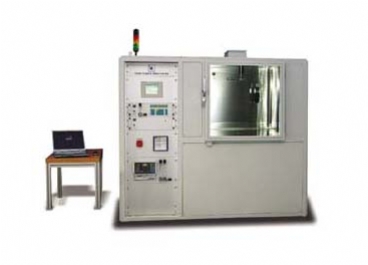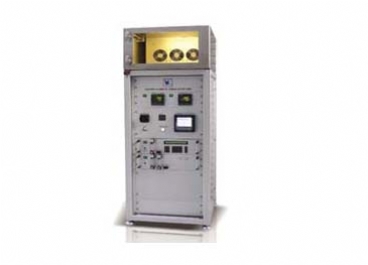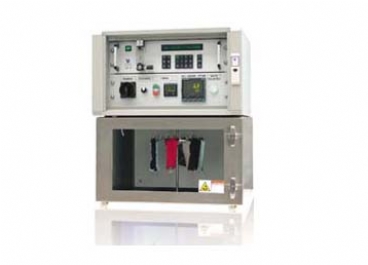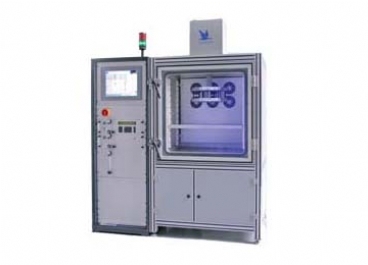咨询热线
18566398802ASTM D470-99测试标准
-> ASTM D470-99标准介绍
-> 符合ASTM D470-99的仪器
ASTM D470-99标准介绍
简介
ASTM D470-99是交联绝缘材料和电线\电缆外皮的老化测试标准。标准后续的数字指代标准的采用年限,或者修订情况下最后确定修改的年份。
1. Scope
1.1 These test methods cover procedures for testing crosslinked insulations and jackets for wire and cable. To determine the test to be made on the particular insulation or jacket, reference should be made to the product specification for that type. These test methods do not apply to the class of products known as flexible cords.
1.2 This standard does not purport to address all of the safety problems, if any, associated with its use. It is the responsibility of the user of this standard to establish appropriate safety and health practices and determine the applicability of regulatory limitations prior to use. For specific hazards see Section 4.
1.3 Whenever two sets of values are presented, in different units, the values in the first set are the standard, while those in the parentheses are for information only.
1.4 In many instances the insulation or jacket cannot be tested unless it has been formed around a conductor or cable. Therefore, tests are done on insulated or jacketed wire or cable in these test methods solely to determine the relevant property of the insulation or jacket and not to test the conductor or completed cable.
1.5 The procedures appear in the following sections:
| AC and DC Voltage Withstand Tests | 22 to 29 |
| Capacitance and Dissipation Factor Tests | 38 to 44 |
| Cold Bend | 128 |
| Cold Bend, Long-Time Voltage Test on Short Specimens | 51 to 57 |
| Double AC Voltage Test on Short Specimens | 45 to 50 |
| Electrical Tests of Insulation | 17 to 64 |
| Heat Distortion Test | 127 |
| Horizontal Flame Test | 100 to 104 |
| Insulation Resistance Tests on Completed Cable | 30 to 37 |
| Mineral Filler Content, Determination of | 111 to 115 |
| Ozone Resistance Test | 87 to 99 |
| Ozone Resistance Test | 87 to 99 |
| Partial-Discharge Test | 58 to 64 |
| Physical Tests of Insulation and Jacket Compounds | 5 to 16 |
| Surface Resistivity Test | 116 to 120 |
| Track Resistance Test | 129 to 132 |
| U-Bend Discharge Test | 121 to 125 |
| Water Absorption Test | 65 to 71 |
| Water Absorption Test, Accelerated | 72 to 86 |
| Water Absorption Test on Fibrous Coverings | 105 to 110 |
2. Referenced Documents
2.1 ASTM Standards: D 149 Test Method for Dielectric Breakdown Voltage and Dielectric Strength of Solid Electrical Insulating Materials at Commercial Power Frequencies2
D 150 Test Methods for AC Loss Characteristics and Permittivity (Dielectric Constant) of Solid Electrical Insulating Materials2
D 257 Test Methods for D-C Resistance or Conductance of Insulating Materials2
D 412 Test Methods for Vulcanized Rubber and Thermoplastic Rubbers and Thermostatic Elastomers—Tension3
D 454 Test Method for Rubber Deterioration by Heat and Air Pressure3
D 572 Test Method for Rubber Deterioration by Heat and Oxygen3
D 573 Test Method for Rubber—Deterioration in an Air Oven3
D 1193 Specification for Reagent Water4
D 1711 Terminology Relating to Electrical Insulation2
D 2132 Test Method for Dust-and-Fog Tracking and Erosion Resistance of Electrical Insulating Materials2
D 3755 Test Method for Dielectric Breakdown Voltage and Dielectric Strength of Solid Electrical Insulating Materials Under Direct-Voltage Stress5
D 5025 Specification for a Laboratory Burner Used for Small-Scale Burning Tests on Plastic Materials6
D 5207 Practice for Calibration of 20 and 125 mm Test Flames for Small-Scale Burning Tests on Plastic Materials6 D 5423 Specification for Forced-Convection Laboratory Ovens for Evaluation of Electrical Insulation
2.2 ICEA Standard:
T-24-380 Guide for Partial-Discharge Procedure7
3. Terminology
3.1 Definitions—For definitions of terms used in these test methods, refer to Terminology D 1711.
3.2 Definition of Term Specific to this Standard:
3.2.1 aging (act of), n—exposure of material to air or oil at a temperature and time as specified in the relevant material specification for that material.
3.3 Symbol:
3.3.1 kcmil—thousands of circular mils.
